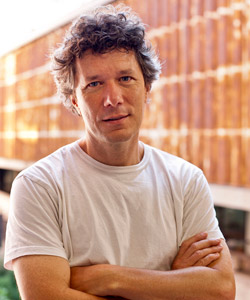By Raquel Peyraube

Dr. Raquel Peyraube is a doctor in medicine and a specialist in the problematic use of drugs. She has trained in psychiatry, toxicology and psychoanalytical psychotherapy and in subjects such as childhood, adolescence and social exclusion. She has 28 years' experience in the field. Throughout her career, she has made contributions in training, prevention, treatment and damage reduction, including innovating theoretical and methodological developments with emphasis on ethical issues. As a former clinical director of ICEERS, she is now an ad hoc consultant of the Uruguayan National Drugs Secretariat giving advice on reform of the public drugs policy and of the Institute of Cannabis Regulation and Control. She is a clinical researcher and a member of research teams for monitoring the law in Uruguay. She sits on several international scientific committees and is an active member of the IACM (International Association for Cannabinoid Medicines). She currently works on the development of clinical trials, medical education on medicinal cannabis, and dissemination of information and advice for reform of drugs policies in various countries.
Meet the Experts is a series of interviews conducted by experts from the field of Cannabis to world leaders in research and clinical practice of Cannabis as medicine.

Manuel Guzmán is Professor of Biochemistry and Molecular Biology at Complutense University of Madrid, member of the Spanish Royal Academy of Pharmacy, and member of the Board of Directors of the International Association for Cannabinoid Medicines. His research focuses on the study of the mechanism of action and therapeutic properties of cannabinoids, especially in the nervous system. This work has given rise to more than one hundred publications in specialized international journals, as well as to several international patents on the possible therapeutic applications of cannabinoids as anticancer and neuroprotective drugs. He routinely collaborates with scientific reviewing and funding agencies.
R. Peyraube: Manuel Guzmán, thank you very much for agreeing to meet me. This is one in a season of interviews that aim to provide the general public and healthcare professionals with scientifically-based information on cannabis and the endocannabinoid system. Given your long and thorough research career in this field, I am quite sure your contributions will be of great value in educating the public and helping them in their decisions.
M. Guzman: Thank you very much for the invitation, Raquel. I’m delighted to be here.
RP: I’d like to focus on certain aspects of the use of cannabinoids in two clinical conditions which are particularly important, given their prevalence: pain and cancer. The effect of cannabinoids in pain relief is well-known and this is one of their most common uses. Could you explain the mechanisms underlying this effect? Do all cannabinoids have this property?
MG: Pain relief is one of the therapeutic actions of cannabinoids for which we have most evidence, based on preclinical and clinical studies. Indeed, all the reviews and meta-analyses concur in this aspect (see, for example, the recently-published official reports from the Canadian Ministry for Health and the US National Academy of Sciences). Cannabinoid CB1 receptors are found, almost exactly like opioid receptors, in practically all neural pathways involved in pain control (including ascending and descending and central and peripheral pathways). Moreover, cannabinoid CB2 receptors are expressed in some peripheral cells as monocytes and keratinocytes, inhibiting the inflammatory response and the release of pain mediators. The most significant analgesic component of cannabis is therefore undoubtedly THC, which is the main cannabinoid with the capacity to activate these CB1 and CB2 receptors. As for CBD and other cannabinoids which do not have high affinity for these receptors, their antioxidant and anti-inflammatory properties can enable them to co-operate with THC in relieving symptoms of inflammatory pain, as well as being useful in improving tolerability of THC-rich plant preparations (in other words, reducing their psychoactivity).
RP: Pain can have different causes. Is the benefit of the analgesic effect of cannabinoids independent of the cause? For example, inflammatory and also degenerative processes, such as osteoarthritis, generate pain, but the causes are different to neuropathic pain, which is where the analgesic effect of THC is undisputed. In these cases, would the use of cannabinoids also be indicated for pain relief?
MG: Pain is an extraordinarily frequent, diverse and transverse symptom of diseases of a very varied aetiology. As a result, its causes and consequences are, indeed, very different. As we have previously discussed, cannabinoids overall possess two types of mechanisms for controlling the generation of pain: a primary one, dependent on cannabinoid receptors, with THC as the main active ingredient; and a secondary mechanism, which is independent of cannabinoid receptors, and whose most significant representative is CBD. In addition, THC (and possibly, to a lesser extent, other cannabinoids too) can help patients to manage pain better, through their anxiolytic, stress-relieving, soporific and mood-enhancing properties. Consequently, although the effectiveness varies from patient to patient, there is considerable evidence that cannabinoids can have analgesic properties in very varied cases of chronic pain (neuropathic, oncological, migraine), associated with osteoarthritis, osteoporosis, rheumatoid arthritis and fibromyalgia, etc.
RP: Your research looks at the more intimate mechanisms at play in the human body, particularly those related to certain actions of cannabinoids. Depending on the differences in the cause of chronic pain, when it comes to considering a well-grounded cannabinoid-based clinical treatment for pain, should we be considering the complementarity of properties of cannabinoids for treating different types of pain? And should we be thinking about the specific association with other components of the plant such as terpenoid? Or do they not affect this benefit?
MG: As I said, pain is essentially an individual symptom and its aetiology and response to treatment are therefore highly diverse. So when considering cannabinoids as possible analgesic drugs, although THC is the main active ingredient of the plant, it would appear on paper more reasonable to treat the pain with combinations of THC (an activator of CB1 and CB2-dependent mechanisms) and CBD/other cannabinoids (stimulators of mechanisms independent of CB1 and CB2). In this way, we can attack the pain from various fronts. And in doing so, we will attenuate the psychoactivity of the THC and thus improve its tolerability. As for terpenes, it is known that some possess antioxidant and anti-inflammatory properties, and that at least one, beta caryophyllene, appears to exercise these properties through its bond to the CB2 receptor. It is therefore likely that the terpenes co-operate with the cannabinoids in the analgesia, although our scientific evidence in this regard is still very limited.
RP: The first characteristic doctors use to define pain is the duration, which obviously depends on the cause. Is the analgesic effect of cannabinoids just as effective in acute pain as in chronic pain? Independently of the patients' preferences, do you think it would make sense from a pharmacological point of view to use it in acute pain?
MG: The analgesic action of cannabinoids is much better demonstrated in chronic pain than in acute pain. Chronic pain is considerably more multifactorial. In such cases, therefore, cannabinoids can kill several birds with one stone (in other words the physical, psychological and psychosocial processes, etc.) and in many cases improve the patient's overall quality of life. However, the studies on acute pain carried out to date (for example, experimental or post-operatory) with inhaled or oral cannabis preparations, or with THC or Nabilone, have generally shown quite irregular responses and very narrow therapeutic windows. So for the moment, at least, I don’t think we have enough evidence to back its therapeutic importance with any degree of certainty.
RP: Let's now talk a bit about cancer. This is an area in which the output and findings from your research have given us clinicians some hope about the possibility of improving the results of oncological treatments. There has been wide discussion of the use of cannabinoids in accompaniment with chemotherapy to reduce its adverse effects, and also about its use in the terminal stages of cancer and other pathologies. However today, I want to focus on the third potential use of cannabinoids in cancer: their anti-tumour action. We know that the intimate mechanisms at play are very complex. But knowing your talent as a teacher, I’d like to ask you to explain in relatively simple terms the mechanisms of action of cannabis and cannabinoids in cancer cells, and tell us which cannabinoids have been shown by molecular biology and pharmacology to have this anti-tumour property.
MG: Practically all the research carried out to date on cannabinoids and cancer cells has used cancer cells cultured on plates or animal models of cancer (generally mice, sometimes rats). Based on numerous scientific studies, various cannabinoids (both natural and synthetic, and especially THC) exercise a wide range of effects that inhibit the growth of cancer cells. These include: (a) Activating cell death through a mechanism known as “apoptosis”. (b) Blocking cell division. (c) Inhibiting the formation of new blood vessels in tumours, in a process known as angiogenesis. (d) Reducing the metastatic capacity of the cancer cells, preventing them from migrating or invading neighbouring tissues. To sum up, cannabinoids appear to be effective substances for the experimental treatment of at least some types of cancer, at least in small laboratory animals.
RP: I gather from your answer that these are similar mechanisms to those the pharmaceutical industry is looking for in developing chemotherapeutic agents. What are the most significant differences with those agents?
MG: We know that, at least in experimental models, THC acts on the cancer cells through their CB1 and CB2 receptors, which belong to a superfamily of proteins known as GPCRs, or G protein-coupled receptors). Essentially there are no accepted antineoplastic therapies today using GPCRs as therapeutic targets. In theory, this could give cannabinoids a touch of “originality” in the field of oncology. For example, one very significant aspect to be taken into account is that, in these preclinical models, the cannabinoids act selectively on the tumour cells but do not activate apoptosis in non-tumour cells. We don’t yet know the precise biochemical reasons for this difference in the way cannabinoids act on tumour and non-tumour cells. However, it is an important observation since it helps explain the low toxicity of cannabinoids as compared to other antineoplastic agents.
RP: The clinical use of cannabinoids has often been questioned on the grounds that most findings are based on evidence from animals. From what we have heard about your work and Cristina Sánchez’s, these mechanisms have been found in both animal and human tissues. But, what level of clinical evidence do we have at this time? You have done remarkable work in searching for this evidence. Can you tell us something about your findings and your developments?
MG: The results published to date are only those of a clinical trial in Phase I (year 2006) geared towards assessing whether cannabinoids are safe and can attenuate tumour growth. Nine patients with an advanced state of recurrent glioblastoma multiforme, the most aggressive form of brain tumour, in whom standard therapy had previously failed, were given THC through a catheter directly to the tumour. Under these conditions administration of the cannabinoid was safe and had no significant adverse effects. The small size of the sample and the absence of a control group meant that we could not draw statistically significant conclusions. However, the data suggested that some patients responded to THC treatment with a reduction in the growth rate of the tumour, as confirmed by image analysis and biomarkers. Unfortunately, additional studies have only begun in the last 2-3 years. A clinical trial is currently being completed in which the combined action of Sativex and temozolomide has been analysed in patients with recurrent glioblastoma multiforme (an identifier in Clinical trials.gov: NCT01812616) and there are other small studies underway to analyse the effect of different cannabinoids (individually or in combination with other drugs) on brain tumours and other solid tumours. These studies substantially reinforce the interest in the potential use of cannabinoids in treating cancer. However, exhaustive clinical trials need to be conducted, taking into account criteria such as patient selection, combination with other chemotherapeutic agents (and radiation treatment or hormone therapy) and the use of different routes of administration. This is the great challenge currently being faced by our laboratory and more widely by the whole field of cannabinoids and cancer.
RP: In my clinical practice, increasing numbers of patients are coming to me asking me to lead their oncological treatment. They say they don’t want conventional chemotherapeutic treatment either because they’ve already had some very bad experiences or they think they will and because they’ve read something on the Internet about curative preparations. However, given the current state of the art in the treatment of the cancer with cannabinoids, do you think that treatment based on the exclusive use of cannabis and cannabinoids would be appropriate? Could we aspire with any certainty to a systematic reduction in tumour mass with a therapeutic strategy of that kind? What would you recommend to people looking for this kind of treatment when it comes to defining the anti-tumour strategy?
MG: The preclinical studies are certainly promising and suggest that cannabinoids might be useful in treating certain types of tumour. However, there is still a long way to go. In the absence of clinical trials (which will still take years to come up with conclusive data), there is simply not enough scientific evidence to enable us to say that treatment with cannabinoids can contribute to improving the chemotherapy currently administered to cancer patients. From a scientific and medical perspective, therefore, our priority at this time must be to develop additional clinical studies. However, taking into account the fact that (a) there is solid evidence of the antitumour activity of cannabinoids in animal models and (b) the use of cannabinoids by cancer patients has proven to be useful in relieving some symptoms of the disease (partly those derived from the adverse effects of other antineoplastic drugs), and (c) the secondary effects of cannabinoids are mild compared to those of other chemotherapeutic agents, many patients logically consider using cannabinoids as a possible aid in treating their disease, especially when other therapeutic options have failed. Naturally, when recommending whether or not to use a given treatment, and deciding on the best posology of a given active agent you have to use a scientific/medical criterion. So my chief recommendation to patients who are interested in using cannabinoids as part of an antitumour treatment is that (a) they should not give up their standard therapy (unless they have very strong reasons for doing so), and (b) they should consult a specialist with experience in the therapeutic use of cannabinoids who can recommend controlled and regulated treatment (if they consider it suitable).
RP: Many thanks for finding the time in your very tight schedule to help us in our mission of respecting and promoting the public's right to information and education in this field.
MG: And again, thank you. It’s been a great pleasure to have been of help.


